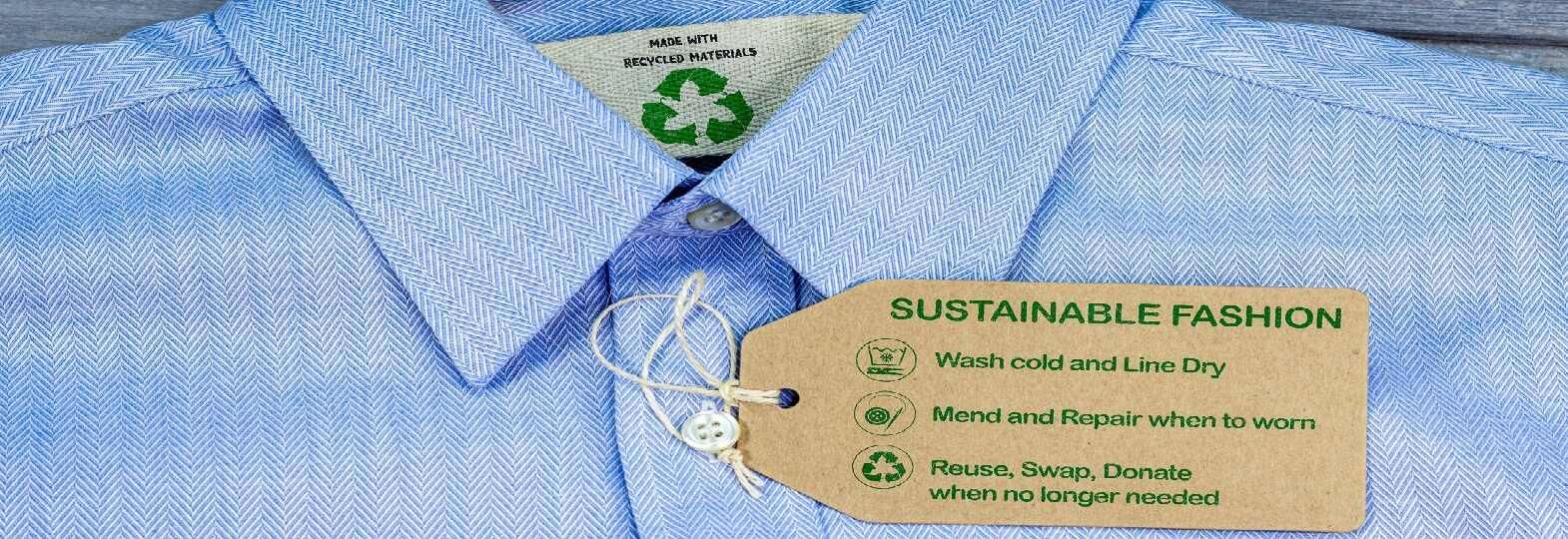Seventy-five per cent of all waste generated by the textile industry is disposed of in landfills globally, as per a report by the Ellen MacArthur Foundation. The report adds that less than one per cent of all textiles are eventually recycled back into clothes. This highlights the unfashionable situation that the textile industry finds itself in. Estimated to contribute around eight per cent to global emissions, the industry is key in helping the world achieve its climate goals.1 Thankfully, the interconnected nature of the industry is enabling cooperation that transcends national borders. A case in point is the United States textile industry now embracing sustainable sourcing strategies, including forging strategic partnerships with countries such as India. Such alliances are bringing sustainable fashion in vogue, with the textile industry proactively embracing green practices.
The transition to sustainable practices
At the 2019 G7 summit, 32 major apparel companies committed to environmental sustainability by signing the Fashion Pact. Signatories to the pact include fashion giants such as Adidas, Burberry, and more. The pact is based on three key pillars: mitigating climate change, restoring biodiversity, and protecting the oceans. Under each of these pillars, the signatories have committed to specific actions and targets to drive positive change. The Fashion Pact encourages collaboration and knowledge-sharing among its signatories to drive innovation and accelerate sustainable practices. By working together, the aim is to transform the fashion industry into a more environmentally conscious and sustainable sector.
The industry’s increased openness to sustainability is founded in the shift in consumer preferences towards sustainable fashion. There is a growing awareness in consumers of the environmental impact of the textile industry and a desire to make more conscious purchasing decisions. Consumers are increasingly seeking out products that are made from eco-friendly materials, produced using sustainable practices, and have a minimal carbon footprint. This growing demand for sustainable textiles has put pressure on companies to adapt and incorporate more environmentally friendly practices into their operations, leading to the rise of sustainable fashion and a more conscious approach to textile production.
However, the textile industry faces numerous obstacles and complexities in achieving its sustainability goals. The global supply chain and complex manufacturing processes make it challenging to implement sustainable practices. Nevertheless, the industry has recognised the importance of green sourcing as a viable solution. It has realised that by sourcing materials and manufacturing processes sustainably, it can minimise its environmental impact while meeting consumer expectations.
Benefits of green sourcing
Green sourcing refers to the strategy of acquiring materials in a cost-efficient manner that not only yields benefits, but also significantly mitigates environmental harm throughout the entire supply chain. By sourcing sustainable materials such as organic cotton and recycled polyester, the industry can reduce its reliance on harmful chemicals and promote responsible farming practices. Organic cotton, for example, eliminates the use of toxic pesticides and fertilisers, protecting both the environment and farmers’ health. Similarly, recycled polyester reduces the demand for virgin polyester production, saving energy and reducing waste.
In addition to the environmental benefits, green sourcing also brings social and economic advantages. Sustainable sourcing supports local communities by promoting fair labour practices, ensuring safe working conditions, and providing employment opportunities. Through integrating sustainability into their operations, textile companies can strengthen their brand reputation, gain a competitive advantage, and attract environmentally conscious consumers. It is not only about doing the right thing for the planet but also about doing it in a profitable manner. Buyers usually are willing to pay a 10 to 15 per cent premium for eco-friendly products.2
The move towards sustainable sourcing
The European Union is the largest apparel market in the world, followed by the US with India being the fifth largest.3 India stands as one of the unique nations globally in the textile manufacturing industry, with a complete value chain ranging from fibre production to garment creation. This comprehensive system exists for both natural and synthetic fibres known as vertical integration which sets India apart from other textile producing countries. These capabilities coupled with availability of key resources such as land, power, water, manpower and a conducive regulatory framework for industries in textiles and apparel sector to thrive, makes India an important ally for the global textile players.
India’s importance as a sustainable sourcing hub is further underscored by local brands championing sustainability. For instance, Aditya Birla Fashion, one of India’s leading lifestyle brands, is placing sustainability at the core of its operational philosophy. The company is an anchor partner for Circular Apparel Innovation Factory, an industry-led action platform, aimed at accelerating the transition to a circular economy. It has also adopted a Product Sustainability Attribute Methodology which is used to measure and enhance product sustainability across the value chain, helping ensure that green metrics are achieved.
Global lifestyle brands such as Patagonia estimate that approximately 95 per cent of their carbon emissions come from the supply chain. In fact, Patagonia has pledged to become carbon neutral across its entire business, including supply chain, by 2025. To get there, the company is now growing fibre the way nature intended, which includes utilising regenerative organic cotton fields in India.
Adidas, noting that climate change is ‘a fight we cannot lose’, has teamed up with a global environmental organisation, Parley for the Oceans, to turn plastic bottles into shoes. Such innovations will be critical in achieving sustainability goals.
Other innovative sustainable manufacturing processes have also made headway in recent times. Waterless dyeing technology, for instance, eliminates the need for large amounts of water traditionally used in dyeing processes. This technology reduces water consumption, energy usage, and chemical waste, significantly minimising the environmental impact.
Another example is the implementation of closed-loop production systems, which focus on recycling and reusing materials at different stages of the manufacturing process. This approach reduces waste generation and contributes to a circular economy model where resources are conserved, and waste is minimised.
To ensure transparency and traceability in the supply chain, blockchain-based traceability systems have been introduced. These systems enable consumers to track the journey of a product, from raw materials to the finished garment, ensuring that ethical and sustainable practices are followed.
Overcoming challenges and future prospects
While the textile industry has made progress in adopting green sourcing practices, it still faces infrastructure and compliance challenges. Upgrading manufacturing facilities, improving water and energy efficiency, and implementing sustainable practices throughout the supply chain require significant investment and commitment.
However, the future prospects for the textile industry’s green sourcing efforts are promising. Research, innovation, and technology play a crucial role in advancing sustainability. By investing in R&D and adopting cutting-edge technologies, the industry can overcome barriers and achieve greater sustainability.
Conclusion
Fast fashion has shown the willingness to embrace sustainable solutions just as fast. However, the interconnected nature of the textile industry and the global commitment to sustainability worldwide necessitate collaborative solutions. India, with its vertical integration across the textile value chain, has become a crucial player in providing these much-needed solutions through sustainable sourcing. By adopting sustainable materials, innovative manufacturing processes, and transparent supply chains, the industry can mitigate its environmental impact and contribute to a better future. It is crucial for industry stakeholders to commit to continued collaboration and sustainable practices for the sake of a sustainable planet. This can only be achieved with a textile industry that is environmentally responsible, economically viable, and socially conscious.









Comments